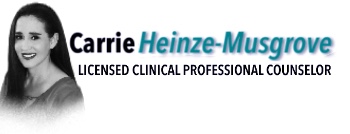“Doors are opening. The wait wasn’t punishment. It was preparation.” Why do we believe that bad things happen to us … Continue reading »
If someone just broke into your home and threatened your life these symptoms would make complete sense. Feelings of anxiety serve as an “alarm system,” alerting you to danger.
Have you experienced these same fears while driving to work? Or after a fight with your spouse? Or at the grocery store? Or sitting quietly in a restaurant?
Anxiety and panic can be the most intensely frightening, upsetting, and uncomfortable experiences of a person’s life. Although the thoughts and feelings are very real, the brain is being tricked into thinking that you are somehow in danger — when actually you are not.
Struggling with these feelings may mean it is time to speak to a therapist. Therapy helps you change ingrained thought patterns and behaviors, and also explore different relaxation techniques to quiet and relax the mind.
Schedule a consultation today. Let’s start the journey towards a better life.
What is Anxiety?
Anxiety is a normal reaction to stress and can actually be beneficial in some situations. It can serve as a warning sign that we can either prepare or plan for something or change something. However, for some people anxiety can become excessive and it is not uncommon for anxiety to be debilitating. While the person suffering may realize their anxiety is too much, they may also have difficulty controlling it and it may negatively affect their day-to-day living. There are six major types of anxiety disorders, each with their own distinct symptom profile:
- Generalized Anxiety Disorder
- Obsessive-Compulsive Disorder
- Panic Disorder (Anxiety attacks)
- Phobia
- Post-Traumatic Stress Disorder
- Social Anxiety Disorder
Collectively, they are among the most common mental disorders experienced by Americans.
General Anxiety Disorder
If constant worries and fears distract you from your day-to-day activities or you’re troubled by a persistent feeling that something bad is going to happen, you may be suffering from generalized anxiety disorder (GAD). People with GAD are chronic worrywarts who feel anxious nearly all of the time, though they may not even know why. Anxiety related to GAD often shows up as physical symptoms like insomnia, stomach upset, restlessness, and fatigue.
Obsessive-Compulsive Disorder
Obsessive-Compulsive Disorder (OCD) is characterized by unwanted thoughts or behaviors that seem impossible to stop or control. If you have OCD, you may be troubled by obsessions, such as a recurring worry that you forgot to turn off the oven or that you might hurt someone. You may also suffer from uncontrollable compulsions, such as washing your hands over and over.
Anxiety Attacks (Panic Disorder)
Panic disorder is characterized by repeated, unexpected panic attacks, as well as fear of experiencing another episode. Panic disorder may also be accompanied by agoraphobia, which is a fear of being in places where escape or help would be difficult in the event of a panic attack. If you have agoraphobia, you are likely to avoid public places such as shopping malls or confined spaces such as an airplane.
Phobia
A phobia is an unrealistic or exaggerated fear of a specific object, activity, or situation that in reality presents little to no danger. Common phobias include fear of animals such as snakes and spiders, fear of flying, and fear of heights. In the case of a severe phobia, you might go to extreme lengths to avoid the thing you fear. Unfortunately, avoidance only strengthens the phobia.
Social Anxiety Disorder
If you have a debilitating fear of being seen negatively by others and humiliated in public, you may have social anxiety disorder, also known as social phobia. Social anxiety disorder can be thought of as extreme shyness. In severe cases, social situations are avoided altogether. Performance anxiety (better known as stage fright) is the most common type of social phobia.
Post-Traumatic Stress Disorder
Post-Traumatic Stress Disorder (PTSD) is an extreme anxiety disorder that can occur in the aftermath of a traumatic or life-threatening event. PTSD can be thought of as a panic attack that rarely, if ever, lets up. Symptoms of PTSD include flashbacks or nightmares about what happened, hyper-vigilance, startling easily, withdrawing from others, and avoiding situations that remind you of the event.
Symptoms of Anxiety
Emotional Symptoms of Anxiety
In addition to the primary symptoms of irrational and excessive fear and worry, other common emotional symptoms of anxiety include:
- Feelings of apprehension or dread
- Trouble concentrating
- Feeling tense and jumpy
- Anticipating the worst
- Irritability
- Restlessness
- Watching for signs of danger
- Feeling like your mind has gone blank
Physical Symptoms of Anxiety
Anxiety is more than just a feeling. As a product of the body’s fight-or-flight response, anxiety involves a wide range of physical symptoms. Because of the numerous physical symptoms, anxiety sufferers often mistake their disorder for a medical illness. They may visit many doctors and make numerous trips to the hospital before their anxiety disorder is discovered. Common physical symptoms of anxiety include:
- Pounding heart
- Sweating
- Stomach upset or dizziness
- Frequent urination or diarrhea
- Shortness of breath
- Tremors and twitches
- Muscle tension
- Headaches
- Fatigue
- Insomnia
The Line Between Anxiety Symptoms and Depression
Many people with anxiety disorders also suffer from depression at some point. Anxiety and depression are believed to stem from the same biological vulnerability, which may explain why they so often go hand-in-hand. Since depression makes anxiety worse (and vice versa), it’s important to seek treatment for both conditions.
Anxiety Attacks and Their Symptoms
Anxiety attacks, also known as panic attacks, are episodes of intense panic or fear. Anxiety attacks usually occur suddenly and without warning. Sometimes there’s an obvious trigger— getting stuck in an elevator, for example, or thinking about the big speech you have to give—but in other cases, the attacks come out of the blue. Anxiety attacks usually peak within ten minutes, and they rarely last more than thirty minutes. But during that short time, the terror can be so severe that you feel as if you’re about to die or totally lose control.
The physical symptoms of anxiety attacks are themselves so frightening that many people believe they’re having a heart attack. After an anxiety attack is over, you may be worried about having another one, particularly in a public place where help isn’t available or you can’t easily escape. Symptoms of anxiety attacks include: Surge of overwhelming panic Feeling of losing control or going crazy Heart palpitations or chest pain Feeling like you’re going to pass out Trouble breathing or choking sensation Hyperventilation Hot flashes or chills Trembling or shaking Nausea or stomach cramps Feeling detached or unreal.
Disclaimer
This screening is intended solely to help identify the symptoms of anxiety. It’s intended to educate and not designed to provide a clinical diagnosis. An accurate diagnosis for any anxiety disorder can only be made by a physician or qualified mental health professional after a complete evaluation, including a physical exam, to rule out any other medical illnesses or conditions that may account for symptoms. Your use of this website constitutes your agreement to the provisions of this disclaimer.




